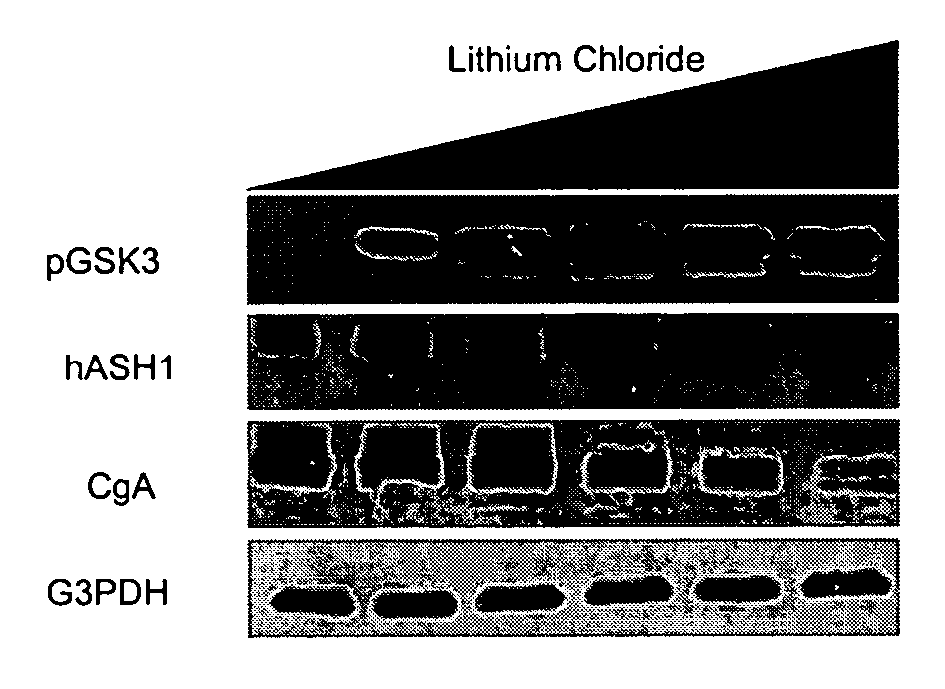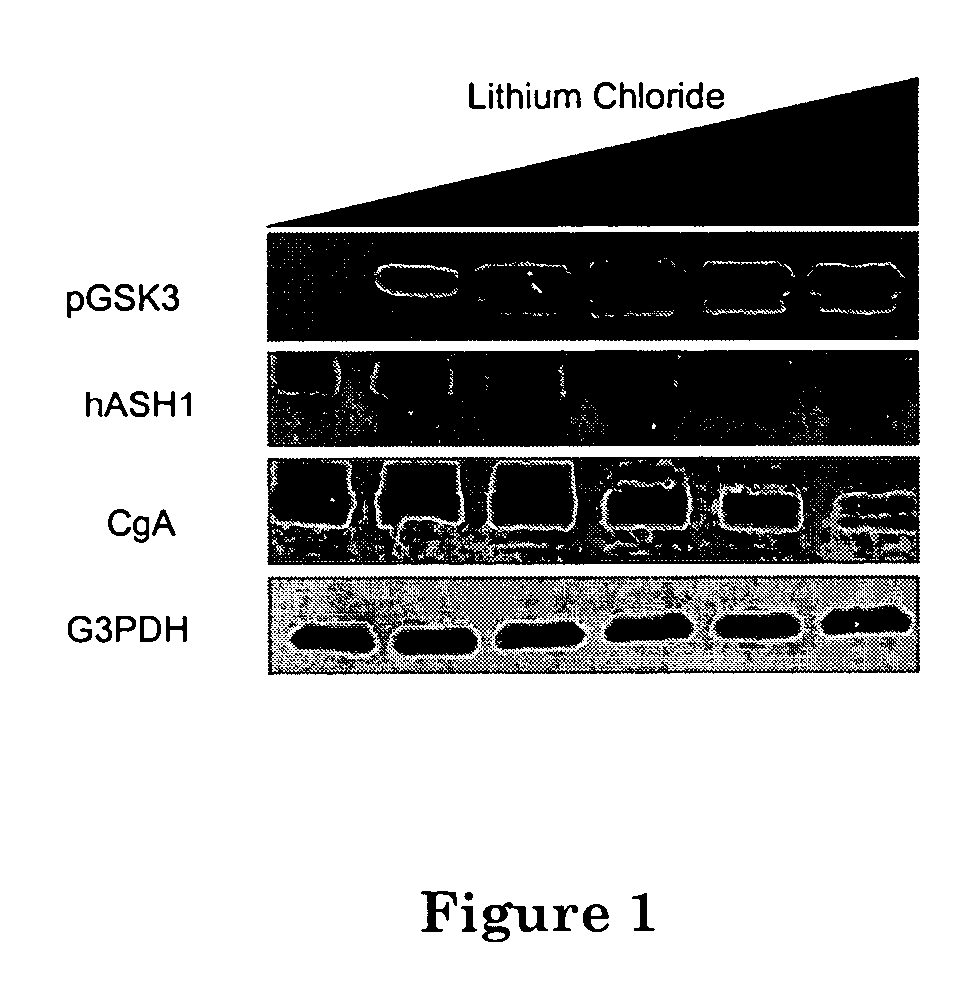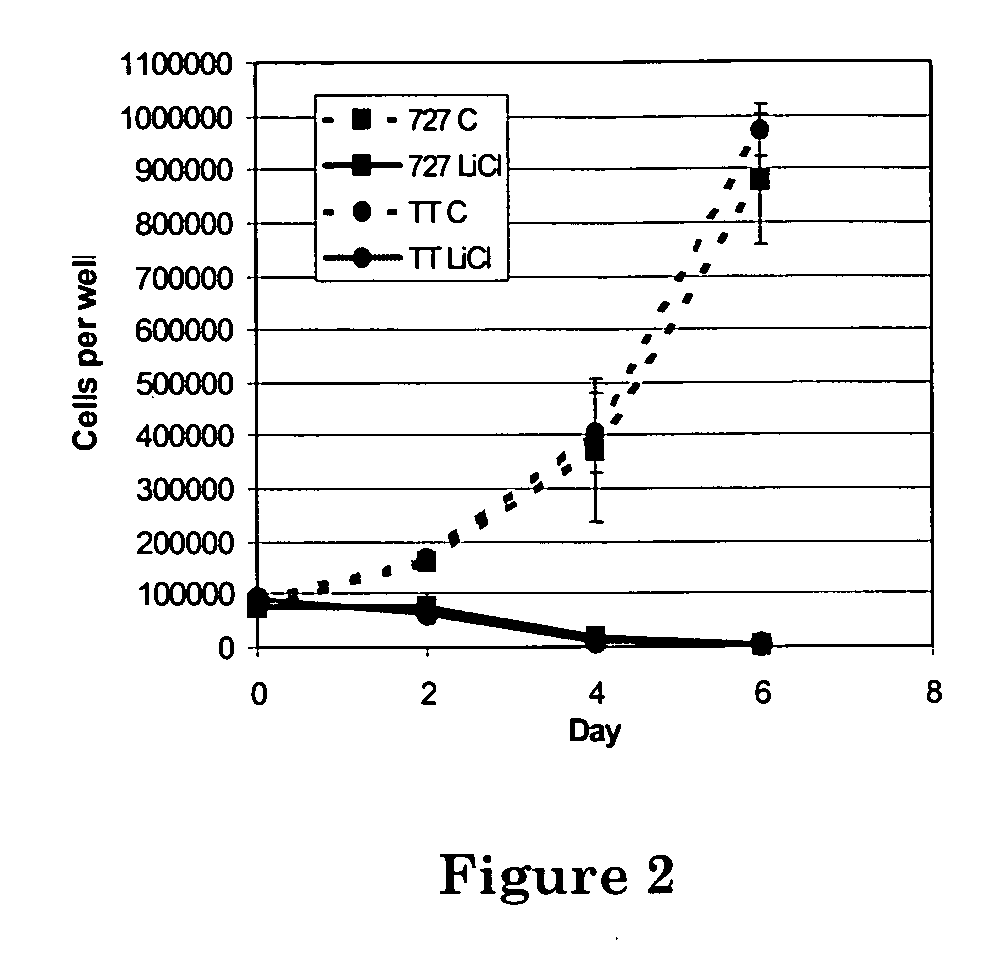Compositions and methods for treating neuroendocrine tumors
- Summary
- Abstract
- Description
- Claims
- Application Information
AI Technical Summary
Benefits of technology
Problems solved by technology
Method used
Image
Examples
example 1
LiCl Increases Phosphorylation of GSK-3β
[0078] TT cells were treated with varying concentrations of LiCl (0-50 μM). Treatment of NE tumor cells with lithium chloride resulted in inhibition of GSK-3β as shown by increasing levels of phosphorylated GSK-3β (FIG. 1).
example 2
Lithium Chloride Suppresses Tumor Cell Growth In Vitro
[0079]FIG. 2 Treatment of medullary thyroid cancer TT and carcinoid H727 cells with lithium chloride (LiCl 20 mM, solid lines) inhibited cellular growth compared to control (C) cells (dotted lines).
example 3
Lithium Chloride Suppresses Tumor Cell Growth In Vivo
[0080] Sixty male nude mice (Strain BABL / C) were injection with 107 human carcinoid H727 cells in the flank. After 3 weeks, measurable NE tumors were found in the mice. The animals were then treated with varying dosages (100 μl of 0, 0.5, 2 and 3 M) lithium chloride by intraperitoneal injection every 2 days for a total of 10 treatments. The lithium treatment lead to a significant reduction in NE tumor growth (FIGS. 3A and 4). FIG. 3B further shows the results of 400 μg treatment for 2 weeks. Importantly, the marked reduction in tumor growth and hormone production was not associated with any measurable toxicity in the animals.
[0081] Similar results were obtained with nude mice injected with medullary thyroid cancer cells.
PUM
| Property | Measurement | Unit |
|---|---|---|
| Fraction | aaaaa | aaaaa |
| Fraction | aaaaa | aaaaa |
| Fraction | aaaaa | aaaaa |
Abstract
Description
Claims
Application Information
 Login to View More
Login to View More - R&D
- Intellectual Property
- Life Sciences
- Materials
- Tech Scout
- Unparalleled Data Quality
- Higher Quality Content
- 60% Fewer Hallucinations
Browse by: Latest US Patents, China's latest patents, Technical Efficacy Thesaurus, Application Domain, Technology Topic, Popular Technical Reports.
© 2025 PatSnap. All rights reserved.Legal|Privacy policy|Modern Slavery Act Transparency Statement|Sitemap|About US| Contact US: help@patsnap.com



